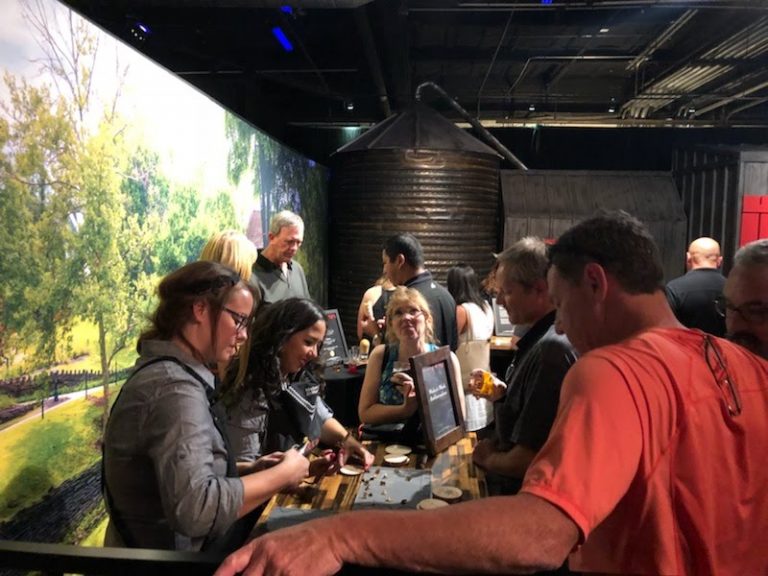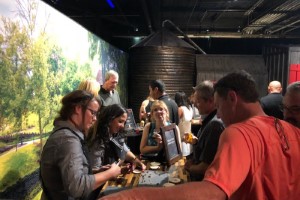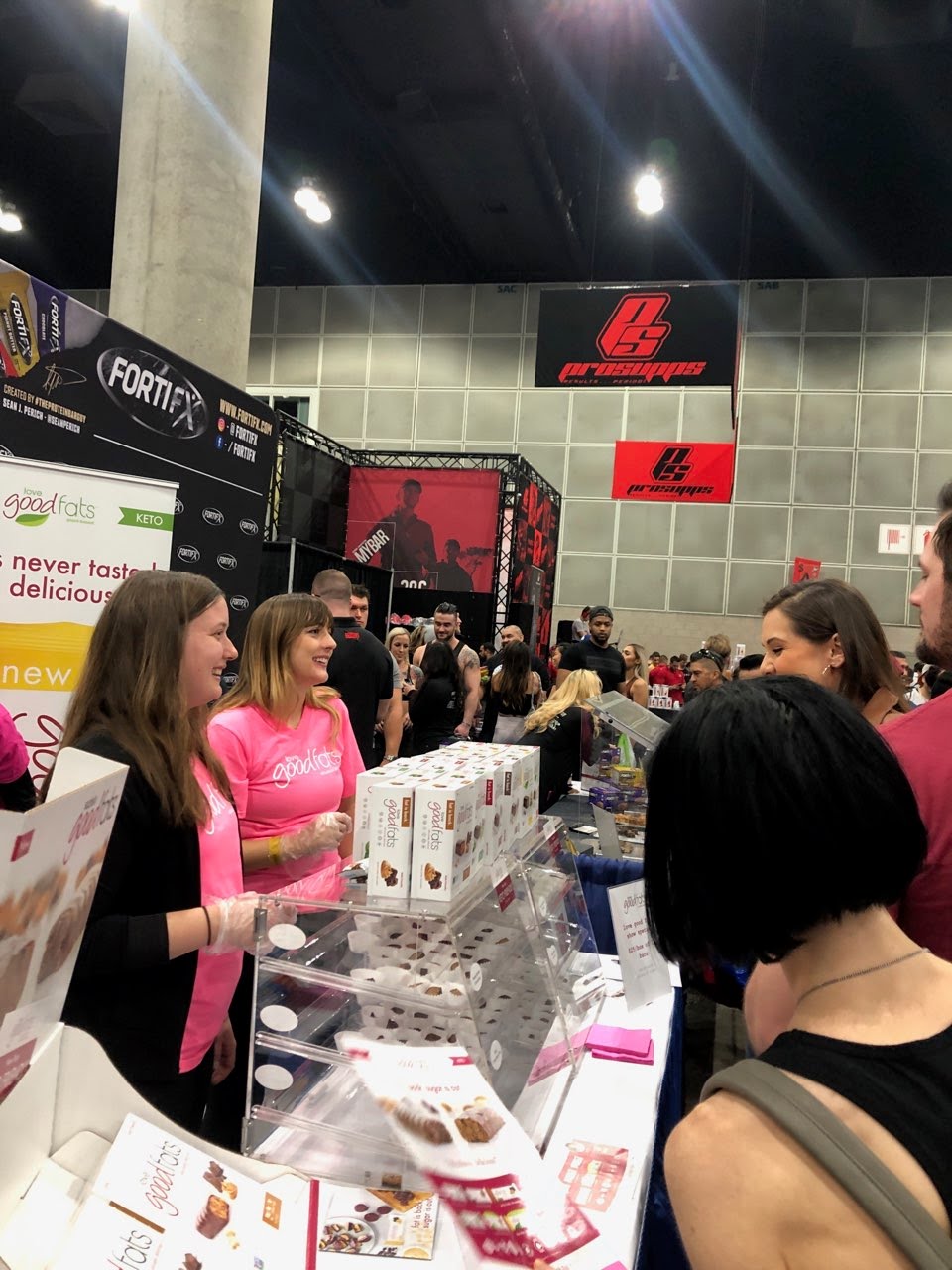02.23.19
By Lisa Major

When pop-up shops first appeared in the experiential marketing space, many thought that they were just a fad that would fade away. With an estimated $80 billion in annual revenues, it’s safe to assume that pop-ups are here to stay. As brands begin to experiment with pop-ups, it’s important that they have a clear plan in place. Like with any experiential strategy, the first step is to determine a budget. This will give a clear understanding of what they can achieve with a pop-up shop. In this week’s edition of Happy Hour, we look at a few considerations to keep in mind when budgeting for a pop-up shop. We’ll also discuss how marketers can justify trade show spending and how experiential marketing drives brand advocacy. We close with an article that outlines how brands can create a compelling brand story across multiple marketing channels.
 Pop-up shops can boost revenue and create buzz for brands of all sizes, not to mention they come with little commitment and are cost-effective. The benefits of these temporary, experiential retail stores have brands around the world investing in them to offer unique and exciting experiences for customers. These experiences allow brands to forge deeper and genuine relationships with their target consumers. If you are thinking of launching a pop-up shop for your brand, the first step is to create a budget. Here, MC2 dives into four considerations you’ll need to examine when building your budget.
Pop-up shops can boost revenue and create buzz for brands of all sizes, not to mention they come with little commitment and are cost-effective. The benefits of these temporary, experiential retail stores have brands around the world investing in them to offer unique and exciting experiences for customers. These experiences allow brands to forge deeper and genuine relationships with their target consumers. If you are thinking of launching a pop-up shop for your brand, the first step is to create a budget. Here, MC2 dives into four considerations you’ll need to examine when building your budget.
 From generating leads to increasing sales, trade show marketing works. It has a tremendous impact on attendees and generates real results for brands. But, when compared to other marketing costs, it’s often the most expensive strategy. For that reason, many marketers feel that the cost can be difficult to justify. The fact of the matter is, trade shows give exhibitors and attendees the opportunity to have two-way, face-to-face conversations which adds so much value and leads to trust. The more conversations you have, the more leads you get, and the more leads you get, the more sales you produce. It seems like a no brainer, right? So how do you convince upper-management that trade show marketing really works? In this article, we look at 5 things that you can use to prove the value of trade show marketing to the higher-ups.
From generating leads to increasing sales, trade show marketing works. It has a tremendous impact on attendees and generates real results for brands. But, when compared to other marketing costs, it’s often the most expensive strategy. For that reason, many marketers feel that the cost can be difficult to justify. The fact of the matter is, trade shows give exhibitors and attendees the opportunity to have two-way, face-to-face conversations which adds so much value and leads to trust. The more conversations you have, the more leads you get, and the more leads you get, the more sales you produce. It seems like a no brainer, right? So how do you convince upper-management that trade show marketing really works? In this article, we look at 5 things that you can use to prove the value of trade show marketing to the higher-ups.
 Each year, new technologies are introduced to help brands reach their target audience while existing ones get better and smarter. And with that, consumers become savvier and have higher expectations. With so much marketing noise in our day-to-day lives, it’s important for experiential marketers to leverage this technology to connect and engage with consumers. From virtual assistants to artificial intelligence, Sparks brings us four digital trends that experiential marketers need to know.
Each year, new technologies are introduced to help brands reach their target audience while existing ones get better and smarter. And with that, consumers become savvier and have higher expectations. With so much marketing noise in our day-to-day lives, it’s important for experiential marketers to leverage this technology to connect and engage with consumers. From virtual assistants to artificial intelligence, Sparks brings us four digital trends that experiential marketers need to know.
 As more and more brands turn to experiential marketing, it’s important that they recognize why this strategy plays such an integral role in reaching today’s consumers. Today’s consumers, particularly Millennials and Gen Z, are leery of big brands and their motives, and it’s important to understand what they value and their expectations. More than anything, they look for brands that demonstrate purpose, authenticity, and transparency. They also rely heavily on recommendations from influencers, social networks, and their peers. Experiential marketing offers brands the opportunity to connect with consumers on their own terms. Here, we take a look at how brands can design experiences that foster trust and drive brand advocacy.
As more and more brands turn to experiential marketing, it’s important that they recognize why this strategy plays such an integral role in reaching today’s consumers. Today’s consumers, particularly Millennials and Gen Z, are leery of big brands and their motives, and it’s important to understand what they value and their expectations. More than anything, they look for brands that demonstrate purpose, authenticity, and transparency. They also rely heavily on recommendations from influencers, social networks, and their peers. Experiential marketing offers brands the opportunity to connect with consumers on their own terms. Here, we take a look at how brands can design experiences that foster trust and drive brand advocacy.
 Marketers often refer to “touchpoints” when talking about each interaction that a brand has with a consumer. This could include website visits, social media interactions, and face-to-face conversations, to name a few. Understanding how each of these touchpoints works together across multiple channels is extremely important. As this article points out, “telling a consistent and emotionally powerful brand story across multiple touchpoints is key to becoming (or remaining) the automatic first choice for your customers.” And brands that create a continuous experience for consumers see a 25% boost in customer loyalty. In this article, Jack Morton outlines three ways marketers can connect each touchpoint to create long-lasting bonds with consumers.
Marketers often refer to “touchpoints” when talking about each interaction that a brand has with a consumer. This could include website visits, social media interactions, and face-to-face conversations, to name a few. Understanding how each of these touchpoints works together across multiple channels is extremely important. As this article points out, “telling a consistent and emotionally powerful brand story across multiple touchpoints is key to becoming (or remaining) the automatic first choice for your customers.” And brands that create a continuous experience for consumers see a 25% boost in customer loyalty. In this article, Jack Morton outlines three ways marketers can connect each touchpoint to create long-lasting bonds with consumers.
Thanks for stopping by for this week’s Happy Hour! Join us again next week to discuss the top news, trends, and tips from the experiential marketing industry!
ATN Event Staffing is the go-to leader in experiential marketing event staffing. With over 16 years of experience in the event staffing industry, we know what it takes and who it takes to take your brand activations to the next level. If you would like to learn more about our event staffing solutions, we’re here to help!